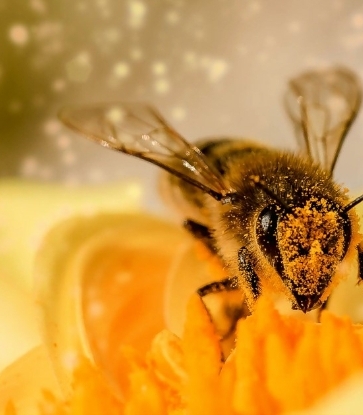Monday 16th October 2023 marks the UN Food and Agriculture Organisation’s World Food Day, and this year the theme is water. Put quite simply, water is life and, without it, we simply wouldn’t be here: 50% of our bodies comprise of water, as well as 75% of the earth.
But what does water have to do with food? Well, we need water for fruit, vegetables and crops to grow – and that produce also feeds the animals that we rear for meat; and without lakes, rivers and oceans, fish and shellfish simply would not exist. Water is the very essence of the world we live in and sustains all life – be it flora or fauna – and it’s something we really can’t do without.

When it comes to physical items, many of us already consider our impact on the planet, focusing our sustainability efforts on what we throw away and maybe even the car we drive, but less-often do we think about the water we waste.
For most of us in the Western world, water is a given. Every day we wash our hands, boil the kettle, rinse our vegetables and heat a pan without giving it a second thought. But water is a finite resource, so if we carry on the way we are, one day that may no longer be the case.
Companies are keen to highlight our carbon emissions, so why shouldn’t it be the same for water? After all, each of us has a water footprint too.

Most of our current water-saving habits are encouraged in a bid to save money, be it on water itself or the electricity associated with its usage – boil only as much water as you need; don't leave the tap running when washing up; wait for a full-load for the dishwasher and then use it on eco mode – but we need to think of water in itself as a precious commodity too, only to be used as needed.
So, we need to change our mindsets in a more detailed way: run a bowl of water when cleaning fruit and veg instead of rising them under a running tap; keep a jug of water in the fridge, so that you don't let water flow down the sink while you wait for it to cool down; start your washing up with the cleanest items first, so that you don't have to keep throwing away the dirty water and refilling the bowl.
With small changes, together we can make a big difference.
You may already do some of these things and think that your water habits are already pretty good, however, when you take a closer look, you might be surprised. Of our daily domestic water consumption, around 10% is used for drinking and cooking, which might not seem that much, but it’s the water that we don’t physically see that is the bigger problem. Once production processes have been added to the food that we eat, that 10% now increases to over 90% of your daily water footprint.
Food production processes uses huge volumes of water, so even before the produce has arrived on the supermarket shelves or in your kitchen, there’s already a massive debt. Different foods have different water footprints, with red meat, particularly beef, being one of the highest. This is because there are two sets of water requirements when farming meat – one for the animals themselves and the other for growing the produce needed to feed them. As such, a meat eater’s diet requires around twice as much water as a vegetarian’s – approx. 5,000 vs 2,500 litres a day.

So, what can you do at home to help reduce your hidden water consumption?
It all starts with your daily habits:
- Try to eat less meat in general. Maybe start by having one or two days a week where you rely only on fruit and vegetables. (This helps climate change in other ways too, with less energy and land needed for farming, as well as fewer animals producing greenhouse gases.)
- Where you are eating red meats, opt for those that are grass rather than corn-fed. Grass is naturally occurring, while corn uses water in its growing process before even reaching the animal.
- Don't buy bottled water; use a refillable bottle instead. Single-use plastic production requires a significant amount of water in the production process, from the extracting, refining and manufacturing of oil and natural gas used to create the resin pellets, to the water required for the cooling process.
- Around a third of the food we purchase goes to waste, so only buy what you need and make sure you use every part of each ingredient. Throwing produce away not only wastes the water used to produce the item, but also any water used for growing feed earlier on in the production chain.






















